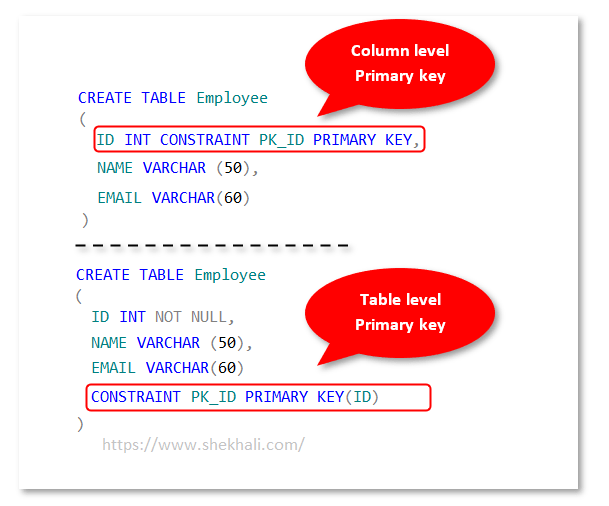Introduction
In the realm of database management, the primary key plays a pivotal role in uniquely identifying each record within a table. When performing INSERT operations, it often becomes crucial to retrieve the primary key value assigned to the newly created record. This article delves into various methods for obtaining the primary key value after an INSERT operation, guiding you through comprehensive techniques and practical examples.

Image: notariaurbina.cl
Fetching Primary Key Value Using IDENTITY Property
The IDENTITY property, available in many SQL databases, automatically increments a unique integer value for each new record inserted into a table. This property simplifies the retrieval of the primary key by eliminating the need for explicit SELECT queries. The following example demonstrates how to use the IDENTITY property in SQL Server:
INSERT INTO Customers (CustomerName, Address)
VALUES ('John Smith', '123 Main Street');
SELECT @@IDENTITY;
In this example, the @@IDENTITY system variable returns the primary key value of the newly inserted record.
Utilizing OUTPUT Clause
The OUTPUT clause provides an alternative method for retrieving the primary key value after an INSERT operation. By specifying the OUTPUT clause in the INSERT statement, you can instruct the database to return the specified columns, including the primary key, to the client application. Consider the following example:
INSERT INTO Customers (CustomerName, Address)
OUTPUT INSERTED.CustomerID
VALUES ('Jane Doe', '456 Oak Avenue');
-- Retrieve the CustomerID from the OUTPUT clause
SELECT CustomerID FROM INSERTED;
The OUTPUT clause ensures that the CustomerID column, representing the primary key, is returned as part of the INSERT operation.
Employing SERIAL Data Type
PostgreSQL and other SQL databases offer the SERIAL data type, which automatically generates a unique sequence of integer values for each new record. When using the SERIAL data type, the primary key value is implicitly assigned and can be retrieved without additional queries. The following example showcases the SERIAL data type in PostgreSQL:
CREATE TABLE Customers (
CustomerID SERIAL PRIMARY KEY,
CustomerName VARCHAR(50),
Address VARCHAR(100)
);
INSERT INTO Customers (CustomerName, Address)
VALUES ('Michael Jones', '789 Park Lane');
-- Retrieve the CustomerID using the SERIAL data type
SELECT CustomerID FROM Customers
WHERE CustomerName = 'Michael Jones';

Image: brokeasshome.com
Leveraging LAST_INSERT_ID() Function
MySQL and MariaDB provide the LAST_INSERT_ID() function, which returns the primary key value of the last inserted record. This function can be particularly useful when working with auto-incrementing primary keys. The following example employs the LAST_INSERT_ID() function in MySQL:
INSERT INTO Customers (CustomerName, Address)
VALUES ('Emily Carter', '999 Pine Street');
-- Retrieve the CustomerID using LAST_INSERT_ID()
SELECT LAST_INSERT_ID();
How To Get Primary Key Value After Insert In Sql
Conclusion
Retrieving the primary key value after an INSERT operation is a fundamental task in SQL programming. By leveraging techniques such as the IDENTITY property, OUTPUT clause, SERIAL data type, and LAST_INSERT_ID() function, you can effectively obtain the primary key value for newly inserted records. Understanding these methods empowers you to work efficiently with databases and manage data with precision.
We encourage you to explore these techniques further and experiment with them in your own SQL projects. If you have any additional questions or require further clarification, please do not hesitate to reach out to us.







